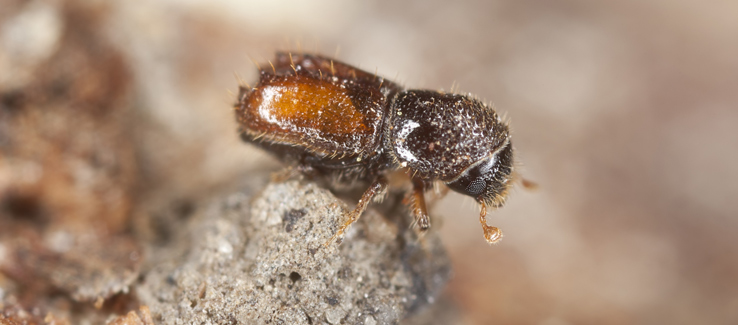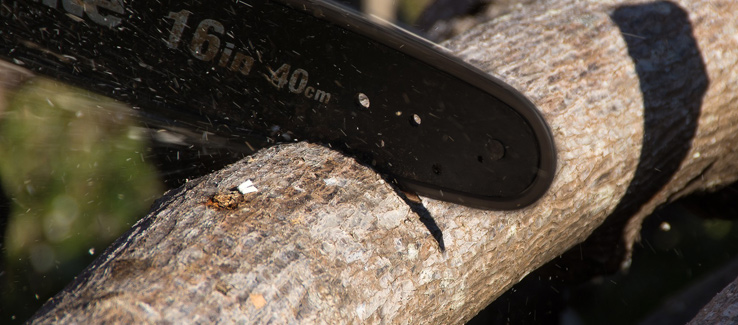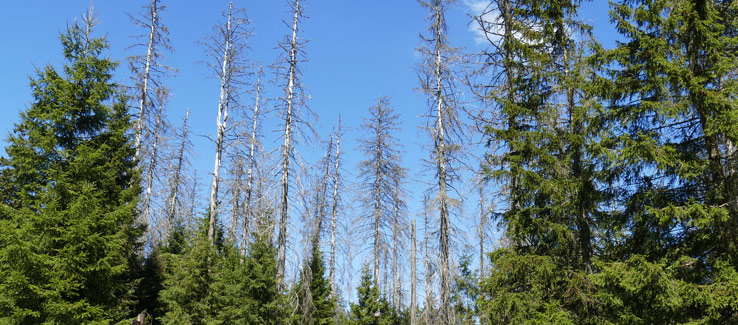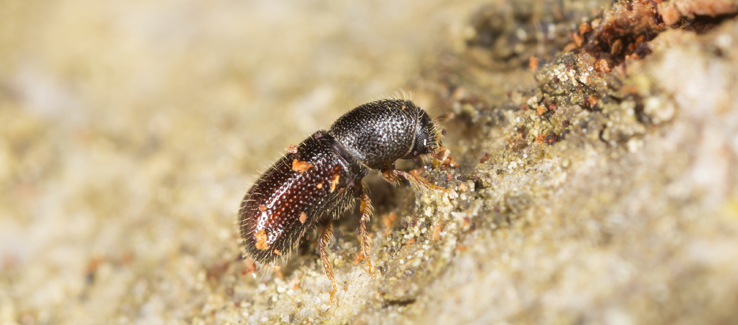Ambrosia Beetle Damage and Treatment
An ambrosia beetle infestation can cause catastrophic damages and the death of your trees if it goes without treatment.
Once an ambrosia beetle infestation is detected, professional treatment should begin immediately as well as steps to prevent spreading.
In this fasttreeremovalatlanta.com article, you will learn how this insect damages trees, discover how to identify an ambrosia beetle infestation, treat it, and prevent them from spreading to other trees.
Identifying an Ambrosia Beetle Infestation
For the mid-Atlantic and southern states, the concerning species of the ambrosia beetle (native to southeast Asia) is the granulate ambrosia beetle, (Xylosandrus Crassiusculus).

Common host tree species for this pest include crape myrtles, magnolias, oaks, willows, peach, plum, cherry, Japanese maples, ash, dogwood, beech, birch, and many other species can support the ambrosia beetle and the ambrosia fungus.
Besides identifying the beetle itself (pictured above), here are a few of the signs to help you positively identify an ambrosia beetle infestation:
- Wilting of foliage on terminal ends of branches and twigs.
- Terminal dieback.
- Entry holes on the affected trunk, branch, or twig.
- Blackening of the tissue surrounding the entry hole or of the “pith” which is the nutrient-rich tissue beneath the xylem and phloem in branches, twigs, and stems.
- Sawdust “toothpicks” will protrude from the hole being bored into the tree.
Watch this video to see the signs of an ambrosia beetle infestation.
Other boring insects will display some of the same signs. Regardless of the species that is attacking your trees, the damage they cause is insurmountable, and action must be taken to halt the infestation.
Ambrosia Beetle Tree Damage
An ambrosia beetle infestation is a bit different from other beetle infestations. Whereas most beetles bore into the tree and stay just under the bark to feed on the xylem and phloem, ambrosia beetles burrow deep into the tree’s heartwood.
Once in the heartwood, the beetle creates a chamber or “gallery,” lays its eggs and releases spores of the ambrosia fungi, which lives on (in a symbiotic manner) and is transported by the ambrosia beetle.
As the fungus grows within the tree, it serves as food for the hatching larvae. And as it spreads, it blackens the pith tissue of the host while invading and feeding off of the tree’s nutrient-rich xylem and phloem.
To further understand the symbiotic relationship between fungi and beetles, watch this video.
Tree boring insects like the ambrosia beetle are able to inflict tremendous damage to trees in all growth and health stages. However, the healthier a tree is, the less likely it will be infested.
Ambrosia Beetle Infestation Treatment
Part of any infestation treatment is the awareness of the problem. Once confirmed, advise your neighbors and any community groups of the situation. Offer to educate them and follow up by recommending the following:
1 – The use of insecticides on infested trees will result in little to no control of the infestation. However, the same insecticides will help keep unaffected trees from being attacked.
2 – Prune back and destroy all affected areas of the tree. If more than 20% of the crown will be lost, seek professional assistance.

In these cases, the tree may become more stressed, inviting further infestation and disease. Removal of the tree may be required to eliminate the infestation altogether.
3 – Severe infestations in which the trunk of the affected tree has many entry points may require the removal of the tree. As mentioned earlier, insecticides provide little to no results on an already infested tree.
4 – Extreme caution should be exercised when using fungicides and herbicides around trees infested by boring insects. In attempting to curb the growth of fungi, the exposed xylem and phloem may carry these chemicals throughout the tree and kill it.
5 – Don’t go it alone. Seek the assistance of a tree professional or arborist, they will be able to guide you through treatments and offer advice based on their knowledge and experience.
Tree Boring Insect Prevention
Preventing infestations begins with the proper and regular maintenance of your trees to keep them healthy.
Ambrosia beetles are less likely to attack healthy trees, instead will attack weakened, dying, or even dead trees with sufficient moisture for their symbiotic fungal growth.

Besides tree health, bark insecticidal sprays are the only other practical way to protect trees from being attacked.
Professional Tree Service and Infestation Prevention
Now that you know how to identify the signs of an ambrosia beetle infestation, the potential devastation they can inflict, and how to prevent or treat an outbreak, you should be prepared when the time comes.
Early identification of an infestation is crucial in halting irreversible damage to your trees. As stated above, the removal and disposal of affected limbs or the entire tree is the only truly effective treatment. Prevention is ultimately a question of the tree’s health and using insecticides before an infestation begins.
By not taking measures to halt an infestation or prevent one from attacking your trees, the risk of that tree weakening, becoming further stressed and eventually dying is significantly increased. Trees in this weakened state are more likely to topple, potentially causing catastrophic damages or even death. Your best course of action would be to call on a professional tree service to evaluate the situation and help you through it.
Sources:
http://www.gatrees.org/community-forests/ask-the-arborist/AmbrosiaBeetlesinUrbanTrees.pdf
https://extension.umd.edu/hgic/ambrosia-beetles-trees-and-shrubs
https://www.clemson.edu/extension/publications/entomology/turf-ornamental/ambrosia-beetles-to22.html
https://en.wikipedia.org/wiki/Ambrosia_beetle
https://trec.ifas.ufl.edu/tropical-entomology/factsheets/ambrosia_beetles.shtml
(404) 220-9965

